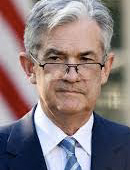2018: The Big Picture
 “Here we are again at the start of a New Year, excitement for new goals and challenges filling the air, expectations running high and the motivation to build another successful year on the back of a very positive 2017. Markets have helped with the cheerful mood as global assets started 2018 on a stellar note.
“Here we are again at the start of a New Year, excitement for new goals and challenges filling the air, expectations running high and the motivation to build another successful year on the back of a very positive 2017. Markets have helped with the cheerful mood as global assets started 2018 on a stellar note.
Overall, we see another supportive year for risky assets and expect global equity indices to end the year in the high single-digit positive territory, driven especially by a strong first half. Our preferred geographies are Europe, Japan and India; our favorite sectors are European financials and US tech. On the fixed income side, we see the FED hiking 2 to 3 times this year with longer-term yields rising slightly more than that. In Europe, no hikes expected until early 2019 but we will likely see the end of ECB’s quantitative easing in September and that may result in longer-term rates inching higher.
Clearly, this is our base case scenario, and as recent history taught us, this does not always materialize (we all remember Brexit and Trump). The main risk we perceive for markets is an escalation of Middle Eastern tensions, especially with respect to the complicated internal and external environment in Saudi Arabia. We also foresee some bumps in European markets around the time of Italian elections and headlines risk continues to be present with respect to North Korea, Russia and the Trump Presidency.
This note will have a more macroeconomic feel to it, and its intent is to provide an overall sense of direction for the year to come but also ignite some critical thinking on important issues we are observing worldwide (I refer to the piece on “consolidation and fragmentation of power”). We will first analyze five main investment themes that we believe will be key for the coming year, and we then drill down to provide our views on the fixed income, FX and equity markets for 2018.
This “Big Picture” will complement itself well with our more tactical monthly “Perspectives”: we hope these publications will enable you to have the market insights you are looking for.”
M. BONDURRI, FOUNDER & CEO
THE RISE OR FALL OF CRYPTOCURRENCIES

Since September, we cannot recall one single day in which at least one cryptocurrency was not mentioned in the news, nor one financial event we attended in which we were not asked about our opinion on Bitcoins! Evidently, the dramatic rise in value of all major cryptocurrencies (Bitcoin, Ether, etc.) powerfully pushed them at the forefront of the news, and forced the financial world (Central Banks included, as their recent minutes have shown) to think about this asset class and if and how to regulate it.
2018 will likely be the make or break year for a number of players in this sector: the industry has gathered momentum, spotlight and market value, and the time is now ripe for either full recognition and the start of dedicated systems and regulations, or failure and corresponding fall in value.
Our view is the following: we see a lot of value in having a more efficient and independent method of payment and to transfer value, in line with what most cryptocurrencies would like to achieve. Therefore, we believe the blockchain system, if properly developed and regulated, could see an ever-increasing role in the future. This being said, we are still skeptical that we are there yet and believe the recent run up in value of most cryptocurrencies is overdone and prone to strong corrections. More worryingly, this trade seems to be an extremely crowded one, with positions often taken by non-financial professional entities: when we have seen these characteristics occur in the past, once everyone starts looking for the exit the result is never a pleasant one.
If cryptocurrencies are indeed to be used as a payment method, more and stricter regulation is required in our view to give credibility and especially intrinsic value to the entire system. Whether Bitcoins or another cryptocurrency (either already existing or yet to be developed) will fulfill these requirements we are unable to say at this moment, but one thing we are sure of: this topic will remain one of the most talked about for the upcoming year and remarkable gains or losses are awaiting. This will not be a game for the faint of heart.
MIDDLE EASTERN UNREST

In our view, the escalation of Middle Eastern tensions is the most likely black swan that could hit the market in 2018. We are not overly worried about the breakout of a conflict with North Korea nor another “cold war” between the West and Russia (even though both events are not impossible), but on the other hand see the potential of negative news coming out of the Middle Eastern region hitting the markets.
In particular, Saudi is currently experiencing four strong problematic issues: a political and family feud within the ruling family, with the new Crown Prince looking to forcefully tighten his grip over the country’s power (the recent “corruption probe” is a clear example of this); rising tensions between the royal families and the rest of the population due to an exponentially increasing income differential, which has been exacerbated by the recent budget cuts due to the fall in the price of oil; continued unstable environment for oil, even though prices have recovered since last year; and finally an overall heated geopolitical environment, especially with respect to the rift with Qatar and Lebanon.
Our base case scenario remains of no conflict breakout, but we have cut all Middle Eastern exposures and are not looking to reinstate them unless a definite change in the political environment occurs, something on which we would not bet. We strongly advise to closely monitor the situation and headlines from this part of the world and be ready to reduce risky assets exposures should the situation escalate further.

Mohammad bin Salman is Saudi’s Crown Prince since 21st of June 2017,
date in which he replaced his cousin Mohammed bin Nayef. In 2016 he unveiled an ambitious plan called “Vision 2030” to change Saudi’s economic and social environment and especially make the country less dependent on oil revenues. His plan included the desire to create the world’s largest sovereign wealth fund including assets derived from the partial privatization of the national oil company Saudi Aramco.
THE PATH OF AMERICAN INTEREST RATES

In 2017 we have experienced a further flattening of the US interest rate curve, with the 3-month Libor increasing in line with FED hikes but longer term rates actually ending the year lower on renowned worries about the potential of future American growth and interest rate path.
Our view is that this flattening should come to a halt in 2018. While we do not expect the 10 and 30-year yields to rise dramatically but only gradually and moderately, we believe that they will increase more than the short term ones. In particular, like most of the market, we expect two to three interest rate hikes this year, but see the 10 and 30 year rates raising by more than that, expecting the 10 year to end around the 3.50% mark (3.25% to 3.75% band). This should occur as a result of continued American growth, which we expect to continue to perform around the current healthy levels (about 3.5% annual GDP growth), increased issuance by the US to fund their growing financing needs, and overall a relatively positive macroeconomic environment in the United States.
One final point to note: since the establishment of inflation targets from Central Banks, such objectives have been more often missed than achieved on a global scale (does anyone remember a 2% inflation rate in Europe?). Does this mean that Central Banks are not doing their job properly, or that maybe their objectives are flawed and based on an obsolete model? We tend to favor the second possibility, and would not be surprised if we saw more and more talk about revised Central Bank mandates throughout the year.

Jerome Powell is Trump’s pick as new FED chairman replacing Janet Yellen. The market expects him to continue broadly in line with current FED policies. He will have the arduous task to navigate an economic environment where inflation remains stubbornly low but risks to over-heat the economy with low interest rates remain palpable.
CONSOLIDATION AND FRAGMENTATION OF POWER

Recent history showed us that many Western countries, like UK, US, France, Spain and Italy, are seeing increasing fragmentation of power, resulting in divided countries from a political point of view (UK with the pro and anti Brexit groups is a glaring case, and the resulting political chaos highlights this further). Much of this can be explained by the rise in populism, which in turn is mostly due to the increasing wealth gap that we have experienced over the last 10 years between the high and low income classes.
On the other hand, a number of other countries are seeing their leaders increasingly consolidate power via different means (Erdogan in Turkey via an aggressive and bloody purge, Putin in Russia as he is looking to yet again win the next election in March with his main opponent being driven out of the race, Xi firming his grip on Chinese leadership further with the inclusion of his name and ideas into the party constitution, effectively elevating his status close to Mao’s one).
In our view this is an important trend that should not be underestimated, as we expect this to continue also in 2018.
When a lot of power rests in the hands of few (or sometimes even only one) individuals, actions (sometimes even drastic ones) can be taken quickly and without much confrontation, which is a double edged sword: good actions taken quickly result in efficiency, bad actions taken in a haste without political confrontation often end in tears. In the end, it all comes down to the real intentions and knowledge of the individuals in power: we will leave you to be the judge of whether such power is rested with capable politicians and what their true objectives are. Clearly, the outcome of their actions will have a great impact on the markets.
CONTINUED EUROPEAN IMPROVEMENT

After a year filled with political risk, which saw elections in a number of key European players like France, Germany and Holland, 2018 should prove a less volatile year for European markets.
A few bumps are expected in the first quarter, with Italian elections coming up and Catalunya independence talks remaining at the forefront of European and especially Spanish headlines, but we do not see the populist MS5 party winning a majority in Italy (our expectation is for the new center/right coalition including Mr. Berlusconi to end up on top) nor Catalunya independence to go any further, and as such are positive on European markets for the upcoming year.
The ECB’s quantitative easing will remain in place at least until next September, and we do not see any interest rate hike by the central bank before the first quarter of 2019, therefore monetary conditions should remain very accommodative, helping equities higher. This being said, a potential end of the Central Bank’s quantitative easing program later this year is likely to spark a slight increase in European interest rates, but this raise should be marginal and we expect this to occur only in the second half of the year.
The continued appreciation of the EUR, on the other hand, is likely to weigh on European stocks in 2018 (our forecast is for EUR/USD to end the year in the 1.25 / 1.30 band). The rise in the single currency started last year, but the real impact of the move has still not been fully felt across the board due to a normal lag in the process. 2018 should be the year in which exporters start feeling the bite of a stronger currency leading to some headwinds for such companies.
Another risk which will continue worrying the markets is the development of Brexit discussions, which are still far from resolved. Nevertheless, even though the outcome will definitely influence EU markets, we see this mostly as a UK risk, as the impact on the United Kingdom will be more severe.
MARKET EXPECTATIONS AND FORECASTS
FIXED INCOME
We already touched upon our view of increasing US interest rates, with longer term ones raising more than their short-term counterparts (we expect the 10-year US rates to end within the 3.25% – 3.75% band). As such, we would avoid taking too much duration risks in investors’ portfolios and would continue focusing on longer dated subordinated bonds issued by solid corporates with short callable dates and interesting coupon resets, in order to at the same time enjoy higher than average yield while keeping duration limited.
In Europe, we do not expect any interest rate hikes before at least the first quarter of next year. We foresee the ECB’s quantitative easing ending in September of this year, likely leading to limited raise in market rates around the same time, also due to a potential shift in tone of the ECB. Overall, though, we remain comfortable in taking more duration risk for EUR denominated paper in order to benefit from higher yields, at least for the first half of 2018.
FX
We believe FX markets will continue being primarily driven by political events and central bank decisions, much like in 2017, and as such are prone to headlines risk.
- EUR / USD : the continued European macroeconomic progress and lowered political risks are likely to continue helping the EUR. We believe the ECB will end its quantitative easing program in September, and this should come with a change of tone from the central bank, which is likely to become less dovish (even though always accommodative), and as such further push the EUR up in the second half of the year. Nevertheless, an overall solid American economy together with increasing US rates are likely to limit Euro’s upside potential. We expect the pair to trade in the 1.25 / 1.30 band in 12 months.
- USD / JPY : Barring the breakout of a high profile negative event, we believe USD/JPY should move higher as opposing central banks’ policies and an increasing interest rate differential weigh on JPY. We see the pair ending the year in the 125 / 130 band.
- AUD / USD : We continue to believe the RBA will step in should the Australian currency appreciate further. We expect the currency to remain range bound around the current levels.
- GBP / USD : the path of this pair will be driven by one event: Brexit talks. Expect cable to move past 1.45 in case of positive outcomes or crater around 1.20 otherwise. On a stand-alone basis, UK’s weak balance of payments and high deficit will continue to weigh on GBP.
EQUITY
We see global equity markets remaining well supported during 2018, especially in the first half of this year. We believe returns will be smaller in magnitude compared to 2017, but expect equity indices to close in the green around the high single digit figure.
Our preferred geographical/sector exposures for 2018 are the following:
- Japan: continued monetary easing and JPY weakness, together with inbuilt equity demand from the local system, should allow Japanese equities to move higher
- India: structural reforms are underway, and even though some of them are creating discontent among the population and businesses (especially the new GST tax reform), we continue to be positive on India’s outlook. We see a relatively strong leadership and demographics as well as business sentiment continue to bode in favor of the country.
- Europe: as previously highlighted, we see European markets continuing their move higher, helped by supportive monetary policy, improved political environment as well as increased business sentiment across the region. We believe European financials could outperform this year, as their books are in better shape than previous years and the ECB should eventually terminate its quantitative easing program, paving the way for a normalization of rates in 2019. This should be positive for financial institutions.
- US Tech – we see more of 2017 into 2018 with respect to this topic: US tech companies, especially the so called “disruptors”, should continue to experience better than average returns due to their growth potential. Let us also not forget that, should the fiscal bill pass in the US, the fall in repatriation tax should be very positive for companies with large cash/profits held abroad (like Apple). We believe this is not yet reflected in today’s prices and see the potential of a further leg up.
